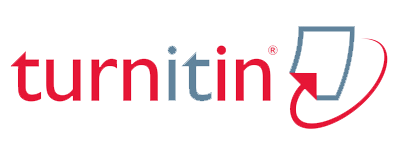Editorial Policies
Open Access Policy
This journal provides immediate open access to its content on the principle that making research freely available to the public supports a greater global exchange of knowledge.
This journal is open access journal which means that all content is freely available without charge to users or institution. Users are allowed to read, download, copy, distribute, print, search, or link to full text articles in this journal without asking prior permission from the publisher or author.
Publication Ethics
SQUARE: Journal of Mathematics and Mathematics Education is a peer-reviewed journal. This journal follows guidelines from Committee on Publication Ethics (COPE) facing all aspects of publication ethics and, in particular, how to handle cases of research and publication misconduct. This statement clarifies ethical behaviour of all parties involved in the act of publishing an article in this journal, including the author, the Editor-in-Chief, the Editorial Board, the peer-reviewer and the publisher (Mathematics Department of UIN Walisongo Semarang). SQUARE: Journal of Mathematics and Mathematics Education are dedicated to following best practices on ethical matters, errors and retractions. The prevention of publication malpractice is one of the important responsibilities of the editorial board. Any kind of unethical behavior is not acceptable, and the journals do not tolerate plagiarism in any form.
SQUARE: Journal of Mathematics and Mathematics Education adapts COPE to meet high quality standard of ethics for publisher, editors, authors, and reviewers. As an essential issue, publication ethics needs to be explained clearly to improve the quality of the research worldwide. In this part, we explain the standard for editors, authors, and reviewers. Publisher don’t have right to interfere with the integrity of the contents and only support to publish in timely manner.
For Editors
- Based on the review report of the editorial review board, the editor can accept, reject, or request modifications to the manuscript.
- Editors should be responsible for every articles published in SQUARE: Journal of Mathematics and Mathematics Education
- The editors may communicate with other editors or reviewers in making the final decision.
- An editor has to evaluate the manuscript objectively for publication, judging each on its quality without looking to nationality, ethnicity, political beliefs, race, religion, gender, seniority, or institutional affiliation of the authors. He/she should decline his/her assignment when there is a potential of conflict of interest.
- Editors need to ensure the document sent to the reviewer does not contain the information of the author, vice versa.
- Editors’ decision should be informed to authors accompanied by reviewers’ comments unless they contain offensive or libelous remarks.
- Editors should respect requests from authors that an individual should not review the submission, if these are well-reasoned and practicable.
- Editors and all staffs should guarantee the confidentiality of the submitted manuscript.
- Editors will be guided by COPE flowcharts if there is a suspected misconduct or disputed authorship.
For Reviewers
- Reviewers need to comment on ethical questions and possible research and publication misconduct.
- Reviewers will do the work in timely manner and should notify editor if they can not complete the work.
- Reviewers need to keep the confidentiality of the manuscript.
- Reviewers should not accept to review the manuscripts in which there is potential conflict of interest between them and any of the authors.
For Authors
- Author(s) affirm that the material has not been previously published and that they have not transferred elsewhere any rights to the article.
- Author(s) should ensure the originality of the work and they have properly cited others’ work in accordance of the references format.
- Author(s) should not engage in plagiarism nor self-plagiarism.
- Author(s) should ensure that they follow the authorship criteria that are taken from SQUARE: Journal of Mathematics and Mathematics Education that is explained in instruction for author of SQUARE: Journal of Mathematics and Mathematics Education
- Authors should not submit the same manuscript to more than one journal concurrently. It is also expected that the author will not publish redundant manuscripts or manuscripts describing the same research in more than one journal.
- Authorship should be limited to those who have made a significant contribution to conception, design, execution or interpretation of the reported study. Others who have made significant contribution must be listed as co-authors. Authors also ensure that all the authors have seen and agreed to the submitted version of the manuscript and their inclusion of names as co-authors.
- The author(s) haven’t suggested any personal information that may make the identity of the patient recognizable in any forms of description part, photograph or pedigree.
- Author(s) should give the editor the data and details of the work, if there are suspicions of data falsification or fabrication.
- If at any point of time, the author(s) discovers a significant error or inaccuracy in submitted manuscript, then the error or inaccuracy must be reported to the editor.
- Authors of the journal should clarify everything that may cause conflict of interests such as work, research expenses, consultant expenses, and intellectual property on the document of SQUARE: Journal of Mathematics and Mathematics Education form disclosure.




























